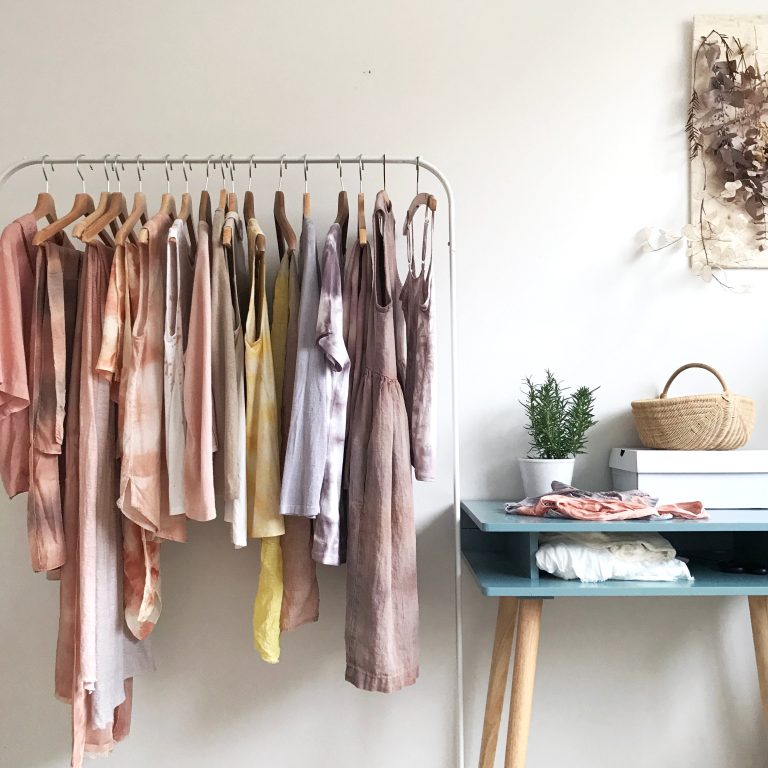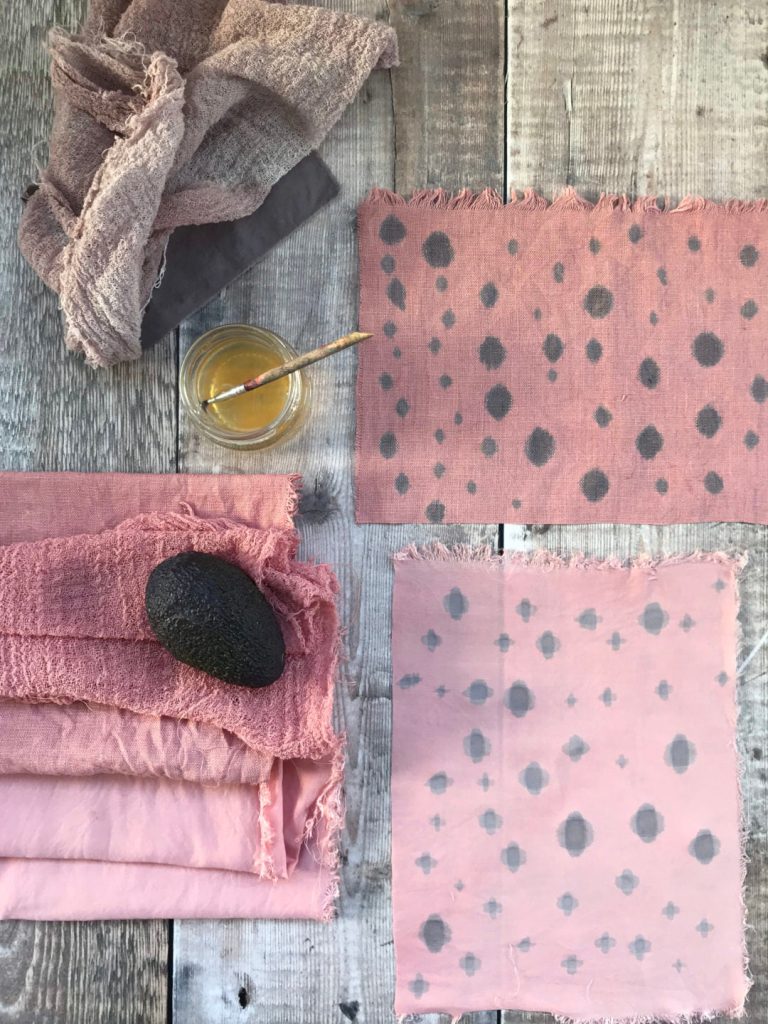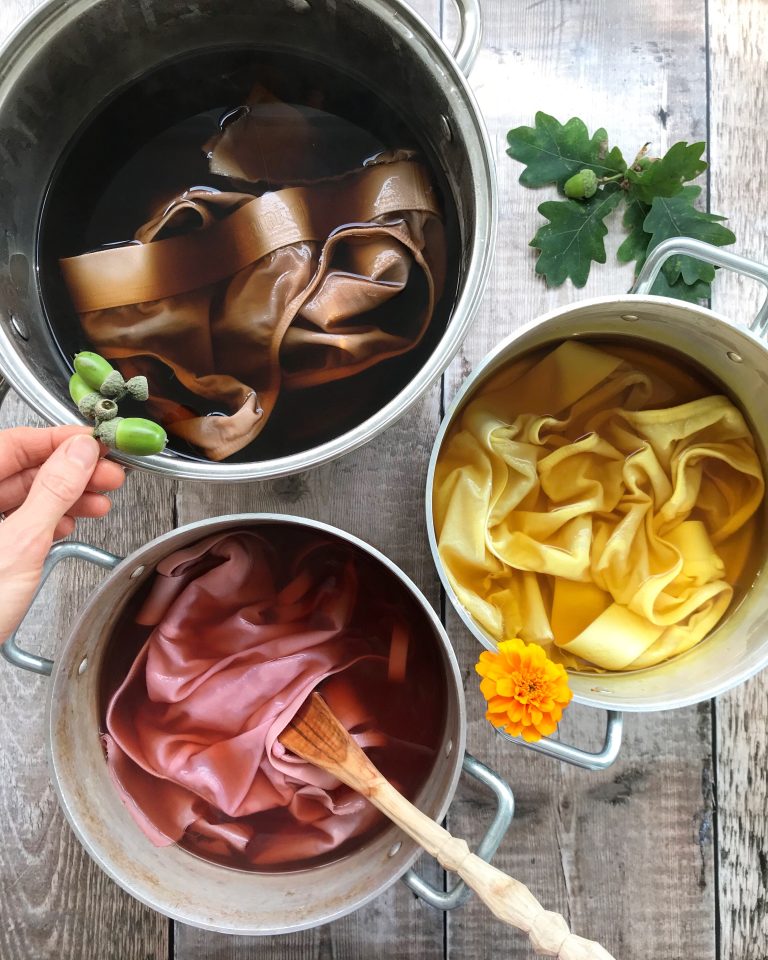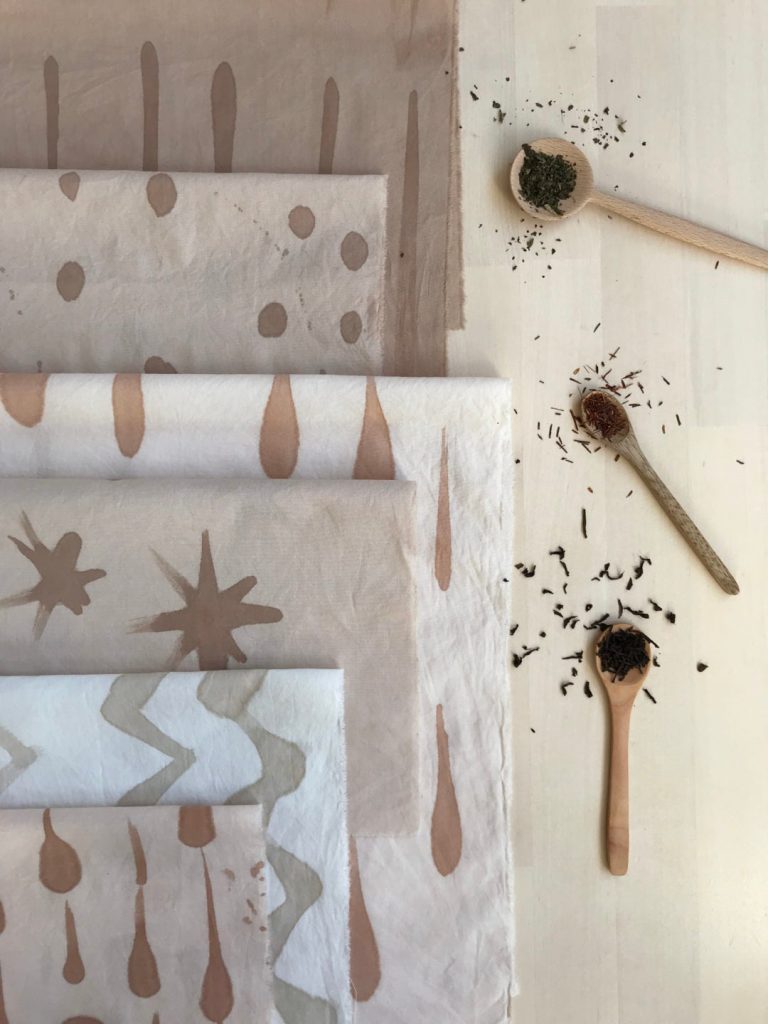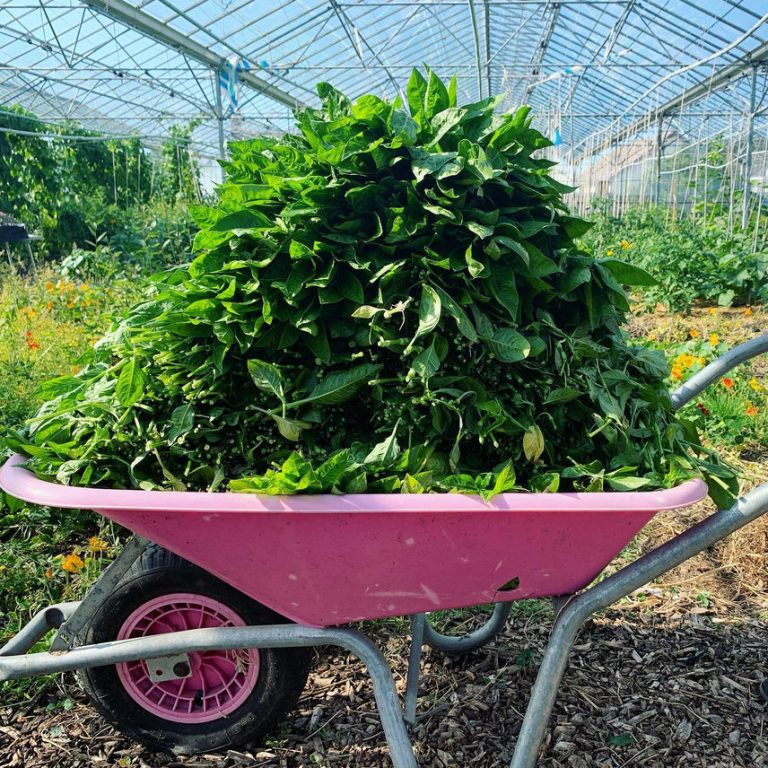Have you tried avocado dyeing but were hoping for brighter pinks? Or maybe you’ve been meaning to try for a while but had a few questions before you started. This blog post is packed with tips that will help you.
Before I jump into that, I just wanted to mention something that I think you’ll love. I have a course dedicated entirely to avocado dye.
My speciality is to take the stress out of natural dyeing so you can get great results and enjoy the process.
introducing
Dye With Avocados
A self-paced video course with life-time access
Access to a private Facebook group for extra support
Plus, get this BONUS video workshop: Printing Herbs onto Fabric

OK, so let’s get started on this blog post…
When anyone tells me that they are disappointed that their avocado dye is more brown than pink, I like to give the following pointers:
- Wash the green flesh off the skins/stones so the dye is as bright as possible.
- Use gentle heat to coax the colour out; don’t cook the avocado skins/stones as this will likely “brown” the dye.
- Keep checking to see how the dye colour is developing and strain out the bits when you’re satisfied with the colour. Don’t watch the time, but use your dye pot as a guide. It’s different each time and only you can see when your dye is ready.
- Allow the fibres to sit in the dye bath for longer to see if you get a deeper colour. Don’t rush.
- Check the pH of your water and shift to more alkali to see if that gives you pinker tones. If that doesn’t help, try other types of water (rain, filtered, sea..).
- Try different avocados.
Now, let’s go through some specific questions in more detail.
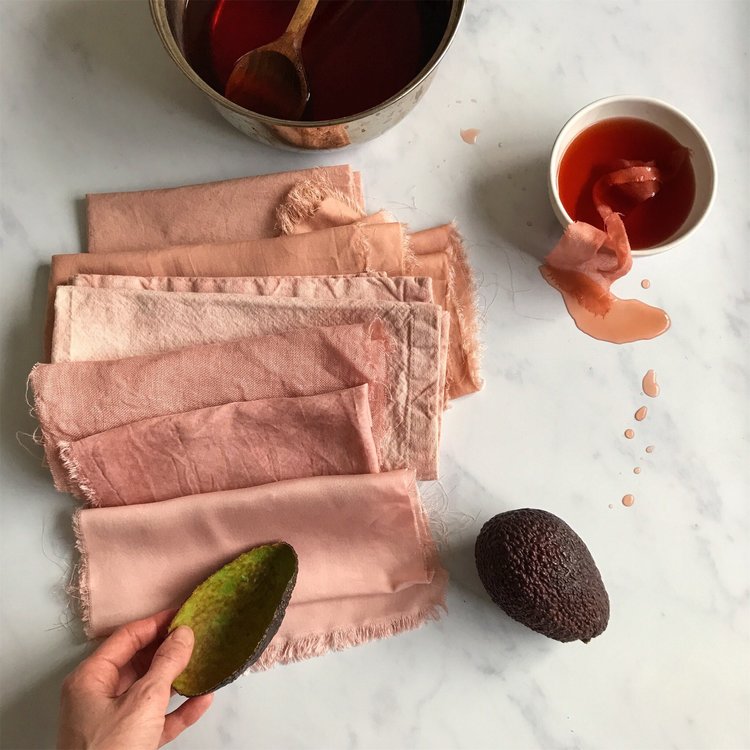
1. How thoroughly should I wash off the flesh before dyeing?
I wash the skins under the tap and scrape with a spoon to remove as much green flesh as possible. Then I leave them to dry on a draining rack. For avocado stones, I like to give them a good wipe with a damp cloth to get the flesh off. If the avocado is very ripe, you will find the flesh cleans off quite easily. Try to leave as little flesh on the skins/stones as possible to get the brightest shades.
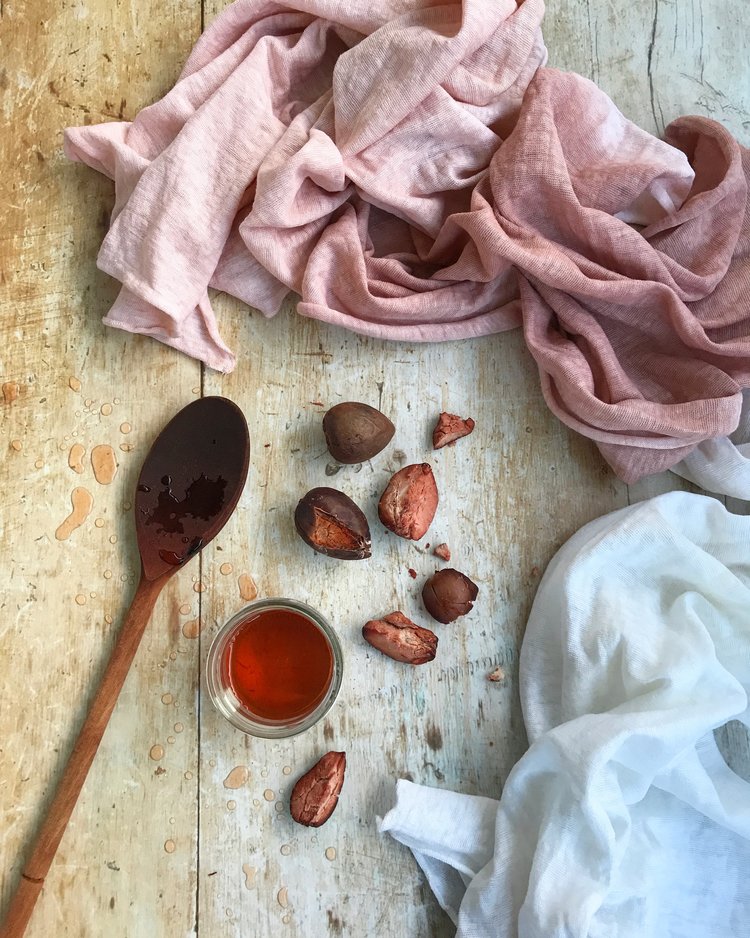
2. What’s the best way to store the avocado skins and stones until you’re ready to dye?
You can freeze them, or dry them on a sunny windowsill and then store in a paper bag or shoe box. Cardboard is breathable so they dry out well and will not go mouldy. If you store them in a glass jar, you’ll most likely find they turn mouldy.
I dye with avocados quite regularly so either freeze the skins and stones, or simply collect them on a plate in the kitchen for a couple of weeks until I have enough. When drying them, I put them on a sunny windowsill (if there’s any sun!) or close to a radiator or on top of my tumble dryer where it gets warm. If you do this, obviously don’t place in a dangerous position where you could cause a fire! It’s best to dry each skin or stone completely before storing with the rest of the collection to avoid mould growth.
3. Are the best colours from fresh, dried or frozen avocado skins and stones?
In general, I always feel that fresh plants give the most vibrant colours. The next best option is to freeze plants. Avocado skins and stones freeze very well and don’t degrade in the freezer like some plants do (for example some flowers turn brown with age when frozen). I’ve never been disappointed with dye from frozen avocado skins or stones.
I also like to dry avocado skins and they can still produce exceptional pinks after quite some time. For avocado stones, I prefer to freeze them as this has proven to be most reliable method… You can still dry the stones but don’t leave them too long before dyeing with them. The skins seem to dry well for months and still make good pinks.
Avocados aren’t a local fruit to me and I’m limited to what I can find in the supermarket. My colours vary throughout the year as the fruits come from different countries across the seasons. It’s impossible to say if colours were caused by the storage method or if it was just the colours from that particular type of avocado e.g. the fruit from that season, country, locality, weather or individual tree. The variables are almost endless.
So overall, it’s really hard to know categorically if one storage method is superior to another. If you had your own avocado tree then you could carry out some controlled experiments to see. In the meantime, just do the best you can.
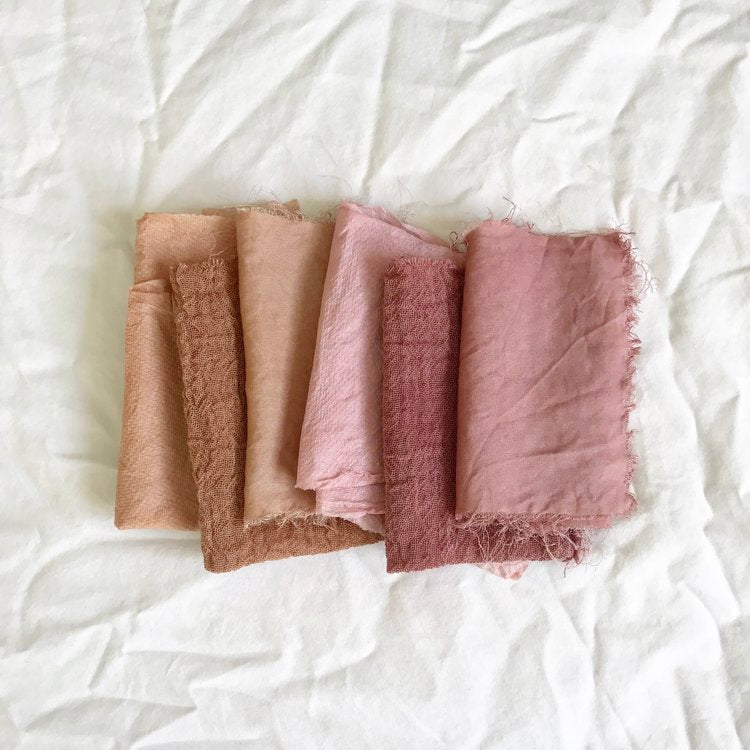
4. Why do the colours vary so much?
As mentioned above, avocados aren’t a local fruit for me, and there are so many varieties and factors that may affect the colours. If you have your own avocado tree in your garden, then you could study how the colours change across the seasons (if this is even a factor – I don’t know for sure). But when we buy avocados in the shops, they are coming from countless different sources from around the globe, so it’s the luck of the draw how they will turn out in the dye pot.
At some points in the year I find the skins give the best pinks, and at other points the stones seem better. At other times, I only achieve peach colours from both, and true pink eludes me. It can be frustrating, but I prefer to see the beauty in all the colours, rather than feel disappointed. When dyeing with whole plants (as opposed to concentrated dye extracts), there are no guarantees and the colour is always a surprise. This is all part of the process.
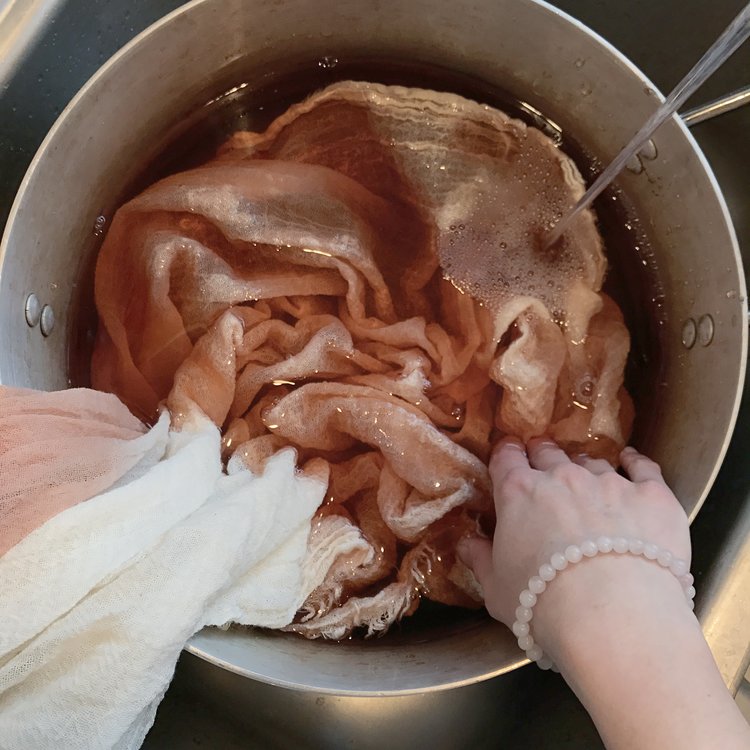
5. Does my tap water affect the colour outcome?
It certainly does, but I’m afraid I don’t have a magic answer for you to alter your water to get the perfect shade of pink.
When I’ve done some dyeing on holiday in other parts of the UK (in Dorset), I made some of my brightest shades of pink ever. Perhaps they were extra special avocados in the shops that week, or perhaps the water was different. I suspect the later was the case. The pH was the same as my home tap water (around pH 7, which is neutral) but there are dissolved gasses, mineral salts and impurities in the water that will affect the colour outcome. Of course I can’t tell you precisely what is affecting your colours as there are many possibilities, but the presence of iron in water is a potential culprit. Some areas have higher concentrations of iron which will darken (or “sadden”) colours and your pinks will come out darker and more “muddied” than you’d originally expected.
If you’re really hoping to get brighter pinks and it’s not happening with your tap water, try with filtered water, rainwater or sea water. One of these might make all the difference for you.
You can also try shifting the pH to alkaline with some bicarbonate of soda, which has helped me on occasions when I’ve been desperate for a clearer pink.
Experimentation is key so you need to see what works for you.
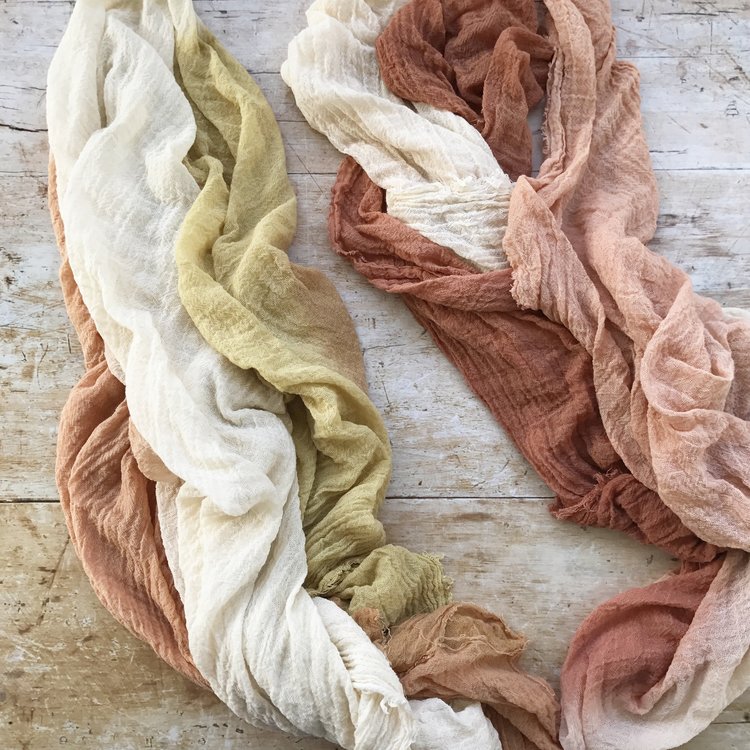
6. Do I need to mordant fabric when dyeing with avocados?
When I dye with cotton and linen with no mordant, I get a light pink or peach. It’s a lovely colour and it lasts well after washing, but I can’t get very deep shades. That’s why I choose to pretreat my fabric in soya milk, which is my mordant of choice. (Details of this in my book Botanical Colour at your Fingertips). So yes, you can dye without a mordant, but it will be very tricky to go beyond a light shade without some kind of mordant on the fabric. But if you’re dyeing wool or silk (I don’t as I’m vegan and choose not to use any animal materials) then you likely won’t need to premordant with anything since avocado skins and stones are high in tannins and these will be enough on the animal protein fibres.
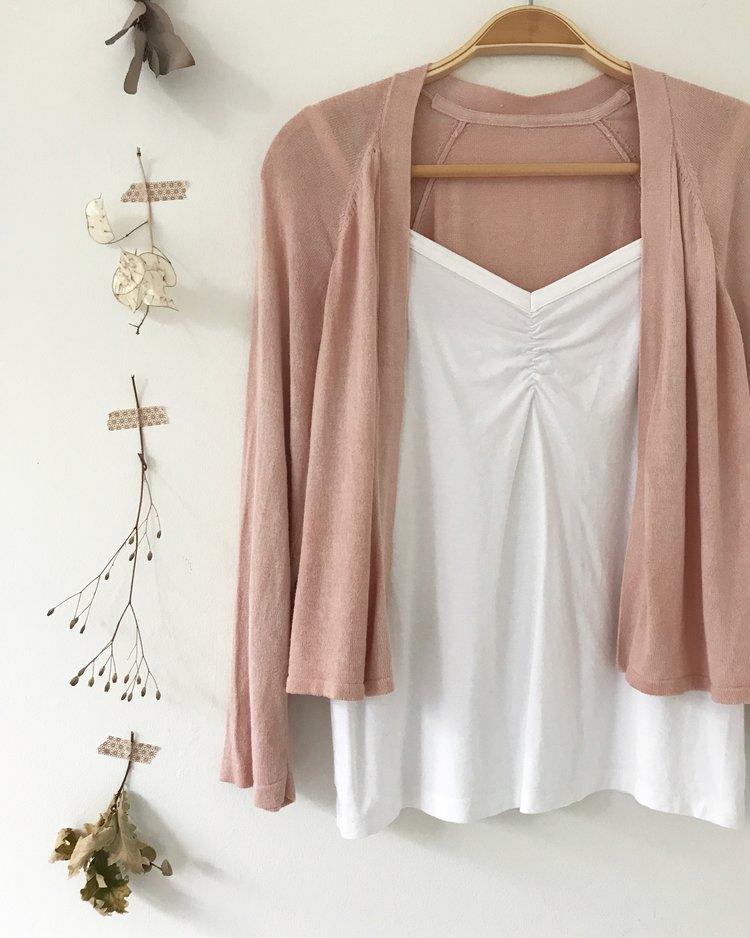
7. How well does the colour last over time?
I find the colours last amazingly well. On a few occasions I’ve accidentally splashed avocado dye on my clothes and the colour has remained for years, surviving lots and lots of washes. When dyeing clothes pink, the colour lasts well and probably does lighten a bit over time, as you’d expect any clothing to fade through use (remember: even synthetic dyes fade). I have several avocado dyed items that are still beautiful after lots of wear. Very pink shades can turn slightly yellow with a lot of exposure to light. I like to think of this as the colour maturing, rather than see it as a negative; plant dyes are alive and it’s natural to undergo change over time. So if dyeing cushion covers or bedlinen, the potential slight yellowing is something to keep in mind, but will probably only happen if the fabric is kept in direct sunlight for prolonged periods of time. I personally find that if clothing is stored out of light when not worn then it keeps its pink tone. The intensity of your sunlight in your part of the world will also determine how quickly colours fade. I’m in the UK which isn’t exactly known for the most intense levels of sunshine 😉
8. Can I spot the dye potential by just looking at the avocado?
Yes! I actually love doing this! It’s not really possible to do when an avocado is unripe and very green, but as it begins to ripen, the skin will darken. Some avocados will turn almost black and have a pinky/purple tinge – these are great ones to dye with.

If you’ve ever made a tiny nick in the stone whilst slicing an avocado open, you’ll see that the cut will turn orange after a few minutes as it oxidises. This is the dye inside the stone.
9. Which varieties of avocado are best for dyeing?
Personally I’ve only dyed with Hass avocados as I’m very limited with what is available in the shops in the UK. If you see pink developing on the skins as the fruit ripens and darkens, they are likely to give you some kind of colour in the dye pot. Have a go and try for yourself. Some varieties of avocado stay very green as they ripen and have thin skin and I suspect that they wouldn’t make pink dye, but perhaps the stones inside would. It’s always worth a try.
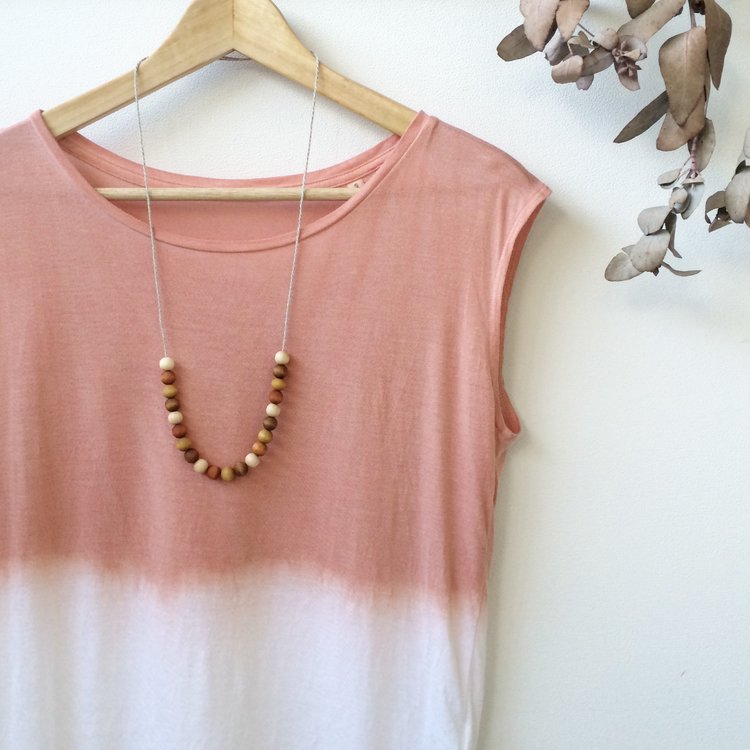
10. Do I need lots of avocado skins and stones for a dye pot?
No, not at all. Try making a pot of dye with just 3 or 4 avocado stones and see how intense the colour can get when you leave them in the water for a day or two. Of course it depends on many factors, and some stones give more colour than others, but if you have some good stones, then you probably won’t need many at all to dye a single garment or short length of fabric. I tend to find I need more avocado skins to get a deep colour though. Maybe 8 avocado skins for a large pot of dye. That’s only one week’s worth of avocados for my family though, so if you enjoy eating them, you’ll find they build up quickly.
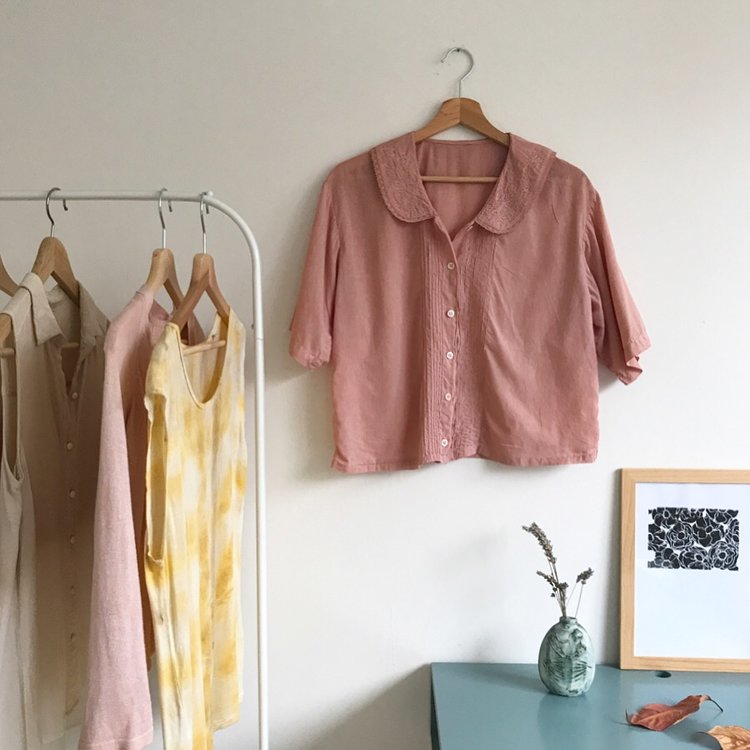
Thanks for reading!
I hope this answered some of your avocado dye questions. If you’d like to learn even more, remember you can enroll into my avocado dye course which gives you an indepth look at this incredible dye plant.

